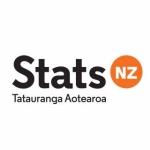Vegetables push food prices up
Food prices increased 0.6 percent in the July 2008 month, Statistics New Zealand said today. The increase was mainly due to higher prices for the fruit and vegetables subgroup (up 3.6 percent), in particular lettuce (up 32.4 percent) and cucumber (up 27.9 percent). The most significant downward contributions to fruit and vegetables came from lower prices for tomatoes (down 14.6 percent) and nectarines (down 32.3 percent).
Other subgroups to increase were grocery food (up 0.5 percent), restaurant meals and ready-to-eat food (up 0.6 percent), and non-alcoholic beverages (up 0.4 percent). The most significant upward contribution to grocery food came from higher prices for yoghurt (up 9.2 percent). Meat, poultry and fish prices decreased 1.0 percent. The main contributor to this decrease came from lower prices for fresh chicken (down 7.1 percent).
For the year to July 2008, food prices rose 7.6 percent. All five subgroups recorded upward contributions to the annual increase, with the most significant being the grocery food subgroup (up 11.2 percent). Within this subgroup, the main contributions came from higher prices for bread (up 19.6 percent), cheddar cheese (up 59.3 percent), butter (up 89.4 percent), and fresh milk (up 10.2 percent).
Statistics New Zealand has reviewed the goods and services included in the Food Price Index (FPI) basket and updated their relative importance. Seven new food items have been added to the basket, including fresh pineapple, soy milk, free-range eggs, hummus dip and chilled fruit juice. The four items removed from the basket include fresh peaches, saveloys and condensed milk.
The new relative importance of the FPI subgroups indicate that about $21 of every $100 spent by households on food is spent on eating out or takeaways. About $17 of every $100 spent on food is on meat, poultry and fish, and about $14 is on fruit and vegetables. Non-alcoholic beverages such as coffee, soft drinks and fruit juice account for $10, and the remaining $38 is spent on grocery food.
